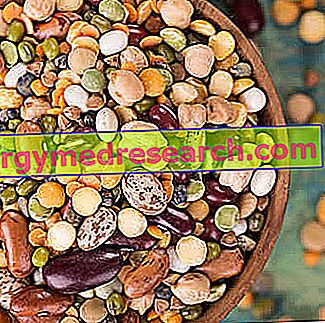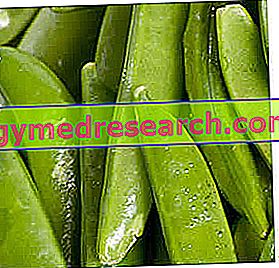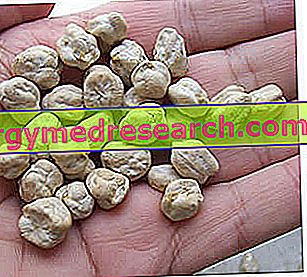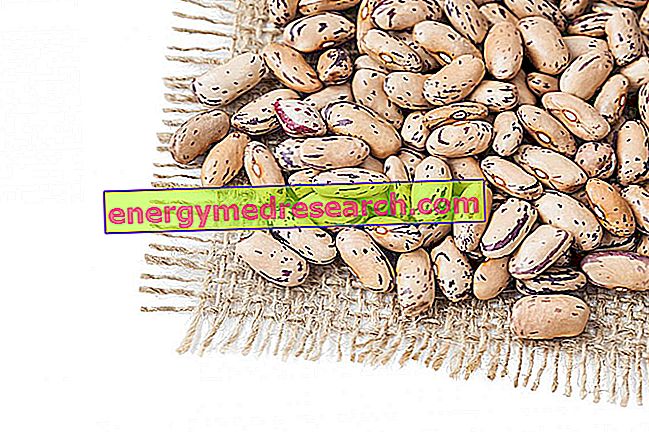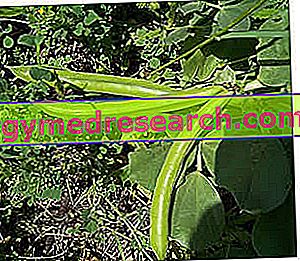Legumes and Leguminous Plants The term legumes means the edible seeds of plants belonging to the legume family (papilionaceae), which can be eaten fresh, dried, frozen and preserved. The most used legumes in Italy are: beans, peas, broad beans, lentils, chickpeas, low consumption of lupins and exceptional chickling
Category legumes
What are Jackdaws? The jackdaws, otherwise known as " peas ", are composed of the pod and the seeds of a pea variety called macrocarpon ; these are edible legumes belonging to the Fabaceae family, Genus Pisum, whose complete Latin name (Genus, Species and Variety) corresponds to Pisum Sativum macrocarpon
Tempeh is a derivative of soy; it is a fermented food that, due to its appearance and perhaps also to the good protein content, is also called soya meat . The tempeh is native to Southeast Asia and is produced by fermenting the seeds of yellow soybeans ; like tofu, tempeh is also more digestible than soya itself and it seems that the fermentation process does not adversely affect the nutritional content of the legume
Tofu and miso are food products derived from the seeds of Glycine max , a leguminous plant commonly known as soy. Tofu The first literary traces that describe the soy plantations (known as ta-tou or big bean) date back to around 3, 000 BC; the tofu appeared only 3000 years later (around the year 0), thanks to the technical and alimentary ingenuity of a Chinese monk-alchemist: Li An
What is Soy Yogurt Soy yogurt is a food based on soy milk, therefore an alternative to the homonymous derivative of animal milk; it is defined as "alternative" because, at the level of world consumption, the vast majority of populations prefer traditional yogurt, while only (so to speak!) the Chinese prefers soy yogurt1
Introduction Chickpeas are the seeds of Cicer arietinum , a herbaceous plant belonging to the fabaceae or leguminosae family. It is therefore a matter of legumes, whose food use is only possible after drying. The chickpea plants are particularly cultivated in Umbria, Lazio, Tuscany and especially in Liguria (remember the typical local specialty based on chickpea flour: farinata); however, all chickpea plants are grown in most Mediterranean regions
Introduction Multiple common names attributed to green beans: croissants, tegoline and mangiatutto beans are just some nicknames, which take on a different terminological nuance based on the dialects of the various regions. Despite being legumes, the green beans would have all the characteristics to be considered "simple" vegetables: unlike, in fact, peas, beans, fava beans, chickpeas etc
Beans in history A basic food of the ancient populations of the New World together with corn, the bean was imported into the European countries by the Conquistadores , following the discovery of the Americas. The bean plant, Phaseolus vulgaris , is therefore native to Central America and Mexico; in those years, in Europe there were already some species of beans (genus Vigna ), of African origin though
Scroll down the page to read the summary table on beans. Beans: origin and import The bean plant was imported into Europe by the Conquistadores. The genus Vigna dei fagioli - cultivated in those years in European countries - was soon supplanted by the Phaseolus genus, more profitable and easier to grow Beans: variety More than 500 varieties of beans are estimated
Scroll down the page to read the summary table on the beans Broad beans: anciently Role as a protagonist as the food of the poor par excellence, given their low cost and easy availability Broad beans: origin The broad bean plant is native to Asia Minor Broad beans: reason for cultivation For centuries the broad bean plant has been widely cultivated for human and animal nutrition (forage) Fave: botanical analysis Botanical name: Vicia faba L
Fave in history It is said that - among the legumes - the beans are the least caloric in absolute; as for lentils and beans, even broad beans have acquired a leading role in ancient times as the food of the poor par excellence, given their low cost and simple availability. The broad bean plant is native to Asia Minor and has been widely cultivated for human and animal food (forage) for centuries

